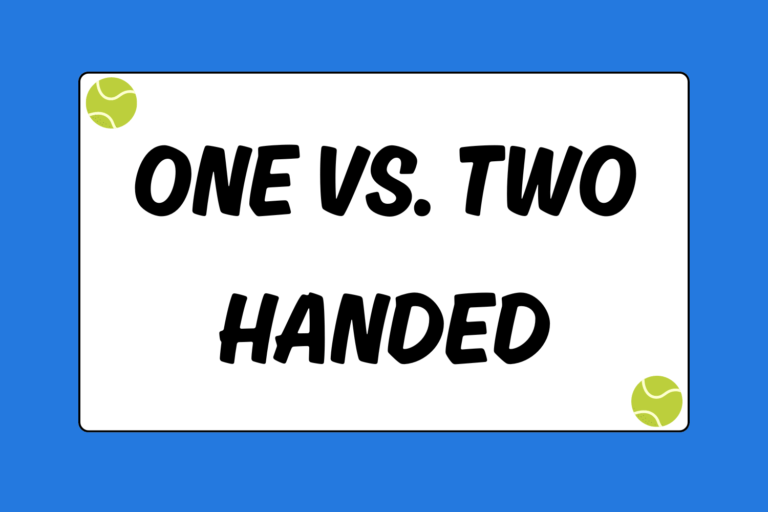Whether you’ve stubbed a toe on the couch or rolled an ankle while chasing down a ball, everyone has suffered some type of inopportune and painful injury.
Tennis injuries can happen at any moment, generally either from overuse or trauma, and are a reality that every athlete dreads and despises. Hopefully your experience on the tennis court is gratifying and harmless, but it’s extremely important to at least be aware of the common injuries that surround the game so you know how to prevent them.
Overuse, or cumulative, injuries develop over an extended period of time due to stress on the muscles, joints, and tissues that aren’t given proper time to heal. If mismanaged or ignored, cumulative injuries can develop from minor, nagging aches to debilitating injuries that leave you on the sidelines for weeks or months.
Traumatic injuries, also called acute injuries, occur when a sudden force, impact, or movement cripples an athlete. In the blink of an eye, a fun and competitive rally can end in disaster.
But with the proper knowledge, research, and training, most serious injuries can be avoided and dealt with accordingly. It’s extremely important that your body is prepared to withstand the physicality of athletic competition, and it’s your responsibility to train appropriately.
This guide outlines some of the most common tennis injuries, so you can walk off the court feeling as healthy and nimble as when you first picked up your racquet.
Tennis Elbow
Lateral epicondylitis, also known as “tennis elbow,” is a common cause of elbow pain for tennis players. Tennis elbow is a cumulative injury that arises when repeated use of the muscles in the arm and forearm causes small tendon tears.
Symptoms
A common symptom of tennis elbow is pain on the outside of the elbow, usually during or after an activity that involves intense use. Occasionally, lifting or gripping objects can cause pain, which, in some cases, radiates down the arm.
Strengthening Method
The most effective form of treatment for tennis elbow is rest. Since tennis elbow is a cumulative injury, suspend any activities that cause or exacerbate the pain and allow your elbow to properly heal. Icing the elbow for 10 to 15 minutes at a time will minimize the inflammation and relieve pain.
For prevention, be sure to target your forearms in strengthening exercises. One simple and effective exercise is forearm curls:
- Using light dumbbells, lay your arms on a flat surface with your palms up, elbows cocked, and wrists bent.
- Slowly lift the weights towards your body without raising your arms. Stop if there is any pain.
- Do three sets; the number of repetitions will depend on your forearm strength.
- Repeat the same exercise, but with your palms facing down, and roll your wrists back towards your body.
- Once again, do three sets of repetitions, and stop if there is any pain.
Rotator Cuff
The rotator cuff is a group of four muscles and their tendons that help stabilize the shoulder. Tennis involves a lot of overhead shots, such as serving, which can put a lot of stress on the rotator cuff and result in an acute or cumulative injury. In the case of an acute injury, the rotator cuff muscles become torn, which severely limits the strength and range of motion of the shoulder joint. Natural “wear and tear” can also injure or tear the rotator cuff. For more in-depth information on strengthening methods, refer to our guide, Rotator Cuff Strengthening for Tennis.
Symptoms
The most common symptoms of a rotator cuff injury are soreness, aching, and weakness in the shoulder when lifting an arm overhead. These symptoms are normally more severe at night or in the early morning.
Strengthening Method
A torn rotator cuff is a debilitating injury that needs to be examined by a physician. However, most recreational and competitive tennis players do not tear their rotator cuff, so it’s more important to focus on strength training to prevent shoulder damage. You repeatedly use shoulders when swinging a racquet, so incorporate exercises that concentrate specifically on strengthening those muscles.
The external rotator exercise is a particularly effective way to target the rotator cuff:
- Sit on a bench with one foot propped up on the bench so that when you rest your elbow on your knee, the upper arm is parallel to the floor.
- Start with your hand in the air, arm perpendicular to the floor, and slowly lower your arm until it’s at a 90-degree angle and parallel to the floor. Don’t allow your arm to dip down below your knee.
- Slowly raise your arm back to the original point, with your arm straight up in the air. Stop at any point if you feel pain.
- Repeat for 12 to 15 repetitions and three sets on each arm.
The external rotator exercise is only one of many exercises that targets your rotator cuff, but it’s extremely valuable. It’s important that you consistently focus on strengthening your shoulder and incorporate weight-lifting into your weekly routine. In addition to strengthening, always make sure you stretch your shoulders before, during, and after any exercise. Stretching releases tension in the muscles and helps prevent injuries.
Hot Tip: Start Light
Remember, the rotator cuff muscles are very small, so use light weights when strengthening them. Initially, a three- to five-pound weight for women and an 8- to 10-pound weight for men might be sufficient.
Ankle Sprain
Ankle sprains are among the most common injuries for athletes, and are extremely bothersome and painful. Ankle sprains occur when there is tearing or stretching of ligaments around the ankle joint.
The ligaments around the ankle are pulled when the ankle is forced into an awkward or unnatural position. Typically when the foot rolls inwards (inversion) or outwards (eversion), ligaments are stretched and a loud “pop” is felt and heard. The pain can be felt almost immediately, and swelling normally follows.
Classifications
There are three degrees of severity for ankle sprains, which are:
- Grade I: A stretching and/or minor tear of the ligament. The symptoms are generally swelling and pain, but you should still be able to walk without assistance or crutches.
- Grade II: Partial tearing of the ligament occurs, and more significant swelling. Bleeding under the skin results in bruising, and mobility is greatly limited. Crutches may be needed.
- Grade III: Complete tearing of the ligaments from the ankle, and swelling and bruising are visible around the injury. Usually, bruising can spread down towards the toes a few days after the injury as gravity pulls blood downwards.
Treatment
If you’re unable to walk, have pain in the foot or above the ankle, and the symptoms persist beyond a few days, you should seek advice from a doctor. However, most ankle sprains can be treated with the R.I.C.E. treatment:
- Rest: Avoid activities and sports until the swelling is down and the pain subsides.
- Ice: Use ice bags on the injured ankle, leaving it on for 15 to 20 minutes. Take at least a 20 minute break, and then reapply the ice bag. Prolonged exposure can result in damage to your skin.
- Compression: Wrapping an ACE bandage around the swollen area compresses the injury and helps reduce swelling. If your ankle throbs, the bandage is wrapped too tightly.
- Elevation: Elevating the injured ankle will also decrease swelling by reducing bleeding in the affected area. Make sure your ankle is elevated about one foot (one-third of a meter) above your heart to increase blood flow.
If a sprained ankle doesn’t improve or strengthen after 7 to 14 days, the injury may be more serious. Consult a doctor for a thorough diagnosis if the pain persists.
Hot Tip: Don’t Leave Landmines
Don’t leave tennis balls lying around the court. Many players suffer sprained ankles or even worse injuries by stepping on a ball that was left on the court. Tennis players need to keep their heads up when running around, so it’s nearly impossible to know if there’s a ball near your feet when you’re rallying.
The Home Stretch
Remember, many injuries are a result of a lack of awareness and poor preparation. If you are uninformed about what your body endures during strenuous activity, then the likelihood of an injury increases. However, if you’re conscious of what muscles you’re using and the areas of your body that need strengthening, then you can very easily avoid injuries. Moreover, targeting certain muscles will not only strengthen your physique, but it can also make you a better overall athlete.
Whether you’re walking your dog or playing sports, injuries can happen at any time. There is no fool-proof system for avoiding injuries, but researching common injuries and knowing how to avoid them will make you a more informed, prepared, and confident competitor.





